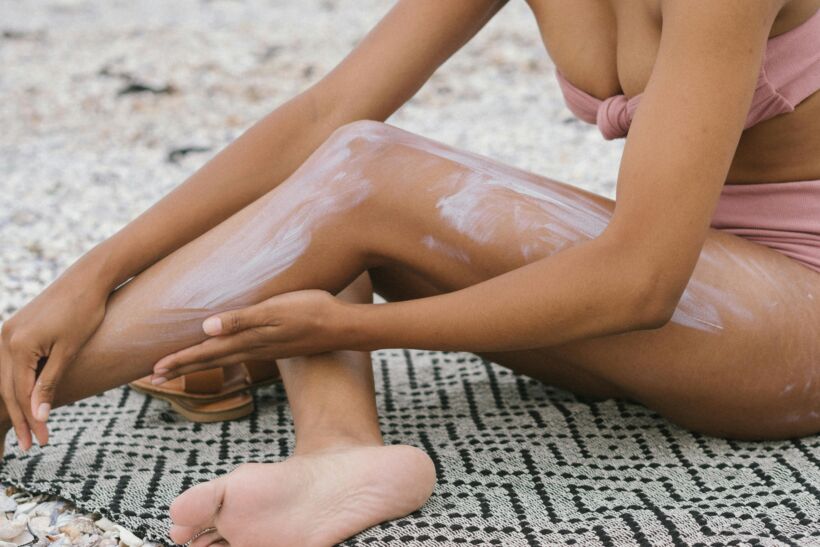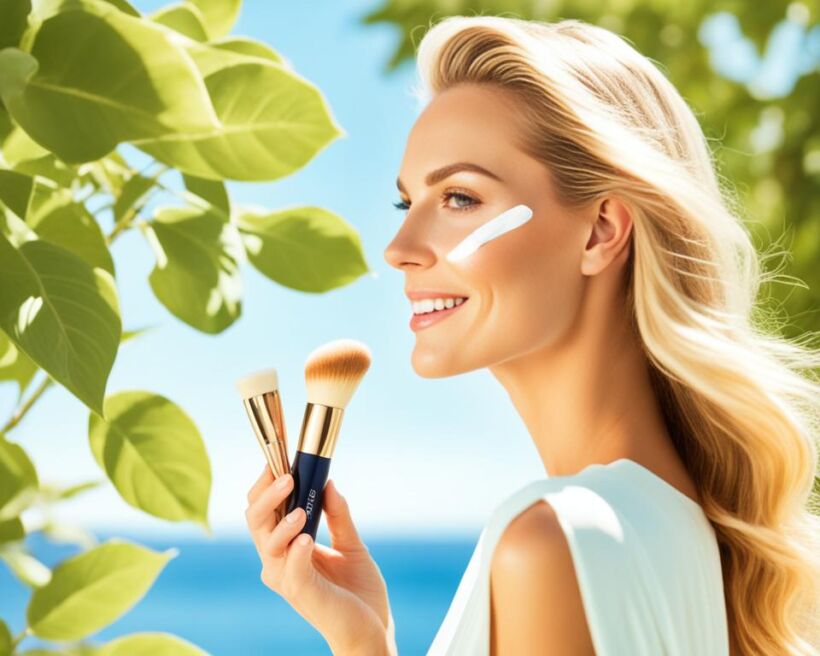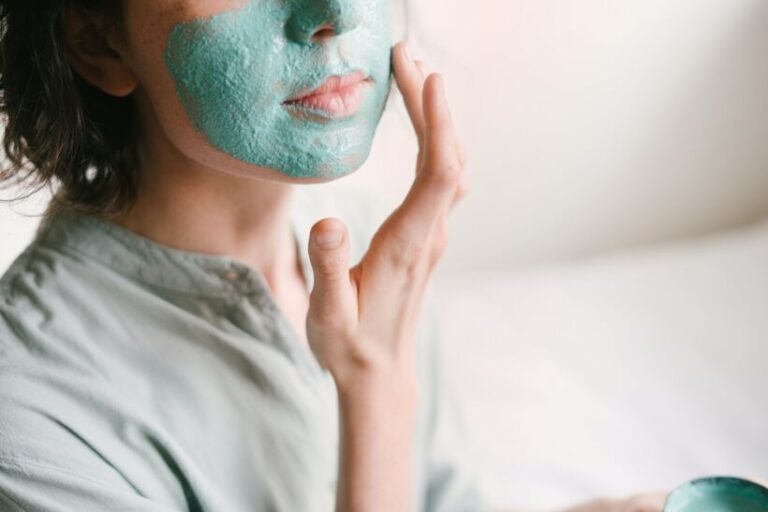Protecting your skin from the harmful effects of the sun is not just important, it’s essential. Whether you have oily, dry, sensitive, or acne-prone skin, finding the right sunscreen can sometimes feel like a daunting task. But fear not, because we’re here to help!
In this comprehensive guide, we’ll provide you with expert tips and recommendations for choosing and using sunscreen that is suitable for all skin types. From the best sunscreens to the importance of wearing sunscreen daily, we’ll cover everything you need to know to keep your skin healthy and protected.
Why is sunscreen so crucial, you ask? Well, besides protecting you from painful sunburns, wearing sunscreen daily can significantly reduce your risk of skin cancer and premature aging caused by sun exposure. It’s not just about looking good; it’s about prioritizing the health of your skin.
So, whether you’re lounging on the beach, going for a run, or simply stepping outside for a quick errand, sunscreen should be your trusty companion. Let’s dive in and discover the sunscreen tips and top picks that will ensure your skin’s well-being, no matter your skin type.
Understanding Different Skin Types
Before diving into sunscreen recommendations, it is important to understand various skin types and how they may influence your sunscreen preferences. In this section, we will explore the characteristics of oily, dry, sensitive, acne-prone, and combination skin types, and provide specific tips for each type when it comes to sunscreen application.
Oily Skin
Oily skin tends to produce excess sebum, leading to a shiny complexion and a higher risk of clogged pores. When it comes to sunscreen, opt for oil-free or mattifying formulas that help control shine. Look for sunscreens labeled as “non-comedogenic” to prevent clogged pores. Lightweight, gel-based or water-based sunscreens are ideal for oily skin as they are less likely to clog pores. Don’t forget to wear sunscreen even if you have oily skin, as sun protection is crucial for everyone.
Dry Skin
Dry skin lacks moisture and can feel tight or flaky. For dry skin, choose moisturizing and hydrating sunscreens that provide an extra layer of hydration. Look for sunscreens with ingredients like hyaluronic acid or glycerin, which help improve skin hydration. Cream or lotion-based sunscreens work well for dry skin as they provide nourishment and lock in moisture. Remember to apply sunscreen on dry skin before moisturizer to maximize its effectiveness.
Sensitive Skin
Sensitive skin is prone to irritation and can react negatively to certain ingredients. Look for sunscreens specifically formulated for sensitive skin, which are usually fragrance-free and hypoallergenic. Physical sunscreens containing titanium dioxide or zinc oxide are generally gentle on the skin. Conduct a patch test before using a new sunscreen to ensure it does not cause any adverse reactions. If you have particularly sensitive skin, consider consulting a dermatologist for personalized recommendations.
Acne-Prone Skin
Acne-prone skin is characterized by frequent breakouts and clogged pores. Choose oil-free, non-comedogenic sunscreens to avoid further exacerbating acne. Look for sunscreens that are specifically designed for acne-prone skin and contain soothing ingredients like niacinamide or tea tree oil. If you wear makeup, opt for non-comedogenic sunscreens that can be worn under foundation without clogging pores. Remember to cleanse your skin thoroughly at the end of the day to remove sunscreen and prevent pore congestion.
Combination Skin
Combination skin has both oily and dry areas, with the T-zone (forehead, nose, and chin) being prone to oiliness while the cheeks may be dry. Choose lightweight, oil-free, and non-comedogenic sunscreens that cater to both oily and dry areas of your skin. Gel-based or water-based sunscreens work well for combination skin as they provide hydration without adding excess oil. It’s important to find a balance that keeps oily areas shine-free while providing enough moisture to dry areas.
Understanding your skin type is key to selecting the right sunscreen that addresses your specific needs. Now that you are aware of the characteristics of different skin types, let’s explore the basics of sunscreen in the next section.
The Basics of Sunscreen
To ensure effective sun protection, it’s crucial to understand the basics of sunscreen. In this section, we will discuss the different types of sunscreens, their SPF (Sun Protection Factor) ratings, and explain how to choose the right sunscreen for your skin type and specific needs.
When it comes to sunscreen, there are a variety of options available in the market. The two main types are chemical sunscreen and physical sunscreen.
Chemical Sunscreens
- Chemical sunscreens work by absorbing UV rays and converting them into heat before they can harm the skin.
- They are often lightweight and easier to blend into the skin, making them a popular choice for everyday use.
- Look for ingredients like avobenzone, oxybenzone, and octinoxate, which provide broad-spectrum protection against both UVA and UVB rays.
Physical Sunscreens
- Physical sunscreens, also known as mineral sunscreens, create a protective barrier on the skin’s surface, reflecting and scattering UV rays away from the skin.
- They typically contain ingredients like zinc oxide and titanium dioxide, which are gentle and suitable for sensitive skin.
- Physical sunscreens are often recommended for those with sensitive or acne-prone skin as they have a lower risk of causing skin irritation or clogged pores.
When choosing a sunscreen, one important factor to consider is the Sun Protection Factor (SPF) rating. The SPF indicates the level of protection the sunscreen provides against UVB rays, which are primarily responsible for sunburn. Look for a broad-spectrum sunscreen with an SPF of 30 or higher for optimal protection.
It’s also crucial to take into account your skin type when selecting a sunscreen. Here are some general guidelines:
If you have oily skin, opt for lightweight, non-comedogenic formulas that won’t clog your pores.
If you have dry skin, look for hydrating sunscreens with moisturizing ingredients like hyaluronic acid or glycerin.
If you have sensitive skin, choose fragrance-free and hypoallergenic sunscreens to minimize the risk of irritation.
If you have acne-prone skin, go for oil-free and non-comedogenic sunscreens that won’t exacerbate breakouts.
If you have combination skin, consider using different sunscreens for different areas of your face or opt for a lightweight, oil-free formula.
Remember to apply sunscreen generously and reapply every two hours or more frequently if you are sweating or swimming. Sunscreen should always be used in combination with other sun protection measures, such as seeking shade, wearing protective clothing, and avoiding the sun during peak hours.
Broad Spectrum Protection
When it comes to sun protection, it’s important to choose a sunscreen that offers broad spectrum protection. This means it can effectively shield your skin against both UVA and UVB rays. UVA rays can penetrate deep into the skin and contribute to premature aging, while UVB rays are responsible for sunburn and can also lead to skin damage.
To ensure comprehensive sun protection for all skin types, we have curated a list of the best broad spectrum sunscreens available. These sunscreens not only provide a high level of sun protection but are also suitable for all skin types, including oily, dry, sensitive, acne-prone, and combination skin.
| Sunscreen Brand | Sun Protection Factor (SPF) | Skin Type | Key Features |
|---|---|---|---|
| Neutrogena Ultra Sheer Dry-Touch Sunscreen | SPF 55 | All skin types | Oil-free formula, lightweight, non-greasy |
| La Roche-Posay Anthelios Melt-In Sunscreen Milk | SPF 60 | All skin types, including sensitive skin | Fast-absorbing, water-resistant, suitable for face and body |
| CeraVe Hydrating Sunscreen | SPF 30 | Dry skin | Moisturizing formula, ceramides for skin hydration |
| EltaMD UV Clear Facial Sunscreen | SPF 46 | Acne-prone skin, sensitive skin | Oil-free, non-comedogenic, contains niacinamide for acne-prone skin |
| Supergoop! Unseen Sunscreen | SPF 40 | All skin types | Invisible finish, can be used as a makeup primer |
These sunscreens have been highly recommended by dermatologists and are known for their effectiveness in providing broad spectrum protection. Remember to apply sunscreen generously and reapply every two hours, especially when exposed to direct sunlight. Protecting your skin with a broad spectrum sunscreen is key to maintaining its health and preventing sun damage.

Applying Sunscreen Correctly
Proper application is crucial for sunscreen effectiveness. Follow these sunscreen tips for all skin types to ensure maximum coverage and protection:
1. Choose the Right Sunscreen
Before applying sunscreen, make sure you have the right sunscreen for your skin type. Look for sunscreen labeled as broad spectrum, which protects against both UVA and UVB rays. Consider the SPF rating as well, with a minimum of SPF 30 recommended for daily use.
2. Apply Enough Sunscreen
Many people make the mistake of applying too little sunscreen, reducing its effectiveness. The recommended amount is about two tablespoons (or one ounce) for the entire body. Be generous with application to ensure adequate protection.
3. Apply Sunscreen 15-30 Minutes Before Sun Exposure
Allow the sunscreen to fully absorb into your skin by applying it at least 15-30 minutes before going outdoors. This will give your skin enough time to absorb the sunscreen and provide optimal protection.
4. Focus on Key Areas
When applying sunscreen, pay extra attention to areas that are often exposed to the sun, such as your face, neck, ears, hands, and feet. These areas are more prone to sun damage and require thorough coverage.
5. Reapply Every Two Hours
Remember to reapply sunscreen every two hours, or more frequently if you are swimming, sweating, or towel-drying. Even water-resistant or sweat-proof sunscreens can wear off, so it’s essential to maintain consistent protection.
6. Don’t Forget Your Lips and Eyes
Protect your lips by using a lip balm or lipstick with SPF. Additionally, shield your eyes from harmful UV rays by wearing sunglasses that offer UV protection.
7. Avoid Common Mistakes
Don’t let these common mistakes undermine your sunscreen’s effectiveness:
- Not applying sunscreen on cloudy days: UV rays can still penetrate through clouds, so apply sunscreen even when the sky looks overcast.
- Skipping sunscreen on indoor activities: Your skin can still be exposed to UV rays indoors, especially if you’re near windows or spending time near electronic devices.
- Forgetting to protect your scalp: Wear a hat or use a scalp sunscreen spray to protect your scalp from sunburn.
- Neglecting areas like the back of your neck and ears: These areas are often forgotten but can get sunburned easily.
By following these sunscreen tips for all skin types and applying sunscreen correctly, you can enjoy the outdoors while protecting your skin from harmful UV rays.
Sunscreen for Different Body Parts
When it comes to sun protection, different parts of your body have specific needs. In this section, we will discuss the considerations for protecting areas like your face, lips, scalp, and body. We will recommend the best sunscreens for each body part, suitable for all skin types.
Face
Your face is one of the most exposed areas and requires extra care and protection from the sun’s harmful rays. Look for a face sunscreen that is lightweight, non-comedogenic, and offers broad spectrum protection. Opt for a product with an SPF of at least 30 for daily use. Some top-rated face sunscreens for all skin types include:
| Sunscreen Brand | Product | SPF |
|---|---|---|
| La Roche-Posay | Anthelios Clear Skin Oil-Free Sunscreen | 60 |
| EltaMD | UV Clear Facial Sunscreen | 46 |
| Neutrogena | Ultra Sheer Dry-Touch Sunscreen | 55 |
Lips
Often overlooked, your lips are susceptible to sun damage. Protect them with a lip balm that contains SPF. Look for a moisturizing formula with broad spectrum protection. Some recommended lip sunscreens for all skin types are:
- Burt’s Bees All-Weather SPF Lip Balm
- Jack Black Intense Therapy Lip Balm SPF 25
- Coola Mineral Liplux Organic Tinted Lip Balm SPF 30
Scalp
While your scalp is hidden by hair, it is still exposed to the sun’s rays. Choose a sunscreen specifically designed for the scalp, such as a lightweight, non-greasy spray or a powdered sunscreen for easy application. Some effective sunscreens for the scalp include:
- Supergoop! Poof Part Powder SPF 45
- COOLA Scalp & Hair Mist Organic Sunscreen SPF 30
- Neutrogena Beach Defense Water + Sun Protection Sunscreen Spray SPF 70
Body
For the rest of your body, choose a sunscreen that is suitable for all skin types and offers broad spectrum protection. Look for a lightweight, non-sticky formula that is easy to apply and absorbs quickly. Some highly rated body sunscreens include:
“Protecting your skin, no matter which part of your body, is essential for maintaining overall skin health and preventing sun damage.”
| Sunscreen Brand | Product | SPF |
|---|---|---|
| Hawaiian Tropic | Silk Hydration Weightless Sunscreen | 30 |
| Coppertone | Ultra Guard Sunscreen Lotion | 50 |
| Banana Boat | Dry Balance Sunscreen Lotion | 50 |
Remember, regardless of the body part you are protecting, it is important to reapply sunscreen every two hours or more frequently if you are swimming or sweating. Prioritize sun protection to keep your skin healthy and safe from the damaging effects of the sun.

Sunscreen and Makeup
If you wear makeup, incorporating sunscreen into your beauty routine is essential for protecting your skin from harmful UV rays. However, finding the right balance between effective sun protection and seamless makeup application can be a challenge. In this section, we will provide you with practical tips on using sunscreen alongside your makeup, ensuring both your skin and makeup look their best.
Choosing the Right Sunscreen
When selecting a sunscreen to wear under your makeup, opt for a lightweight formula that doesn’t feel heavy or greasy on the skin. Look for sunscreens specifically designed for the face, as they tend to be more lightweight and non-comedogenic, meaning they won’t clog your pores.
Pro tip: Choose a broad spectrum sunscreen with an SPF of at least 30 to ensure protection against both UVA and UVB rays.
Applying Sunscreen before Makeup
Before applying makeup, cleanse your face thoroughly and apply a moisturizer suitable for your skin type. Allow the moisturizer to absorb fully before moving on to sunscreen.
Apply a dime-sized amount of sunscreen to your entire face, making sure to focus on areas that are most exposed to the sun, such as the forehead, cheeks, nose, and chin. Gently massage the sunscreen into your skin using upward motions to ensure even coverage.
Pro tip: Let the sunscreen sit on your skin for a few minutes to dry down before proceeding with your makeup application. This will help prevent any interference between the sunscreen and your makeup products.
Choosing Makeup Products with SPF
In addition to wearing sunscreen underneath your makeup, you can also consider using makeup products that contain SPF for added sun protection. Look for foundations, BB creams, tinted moisturizers, and lip products that offer SPF coverage.
Pro tip: Keep in mind that the SPF in makeup products should not replace your regular sunscreen. Adding additional sunscreen underneath will ensure adequate protection.
Reapplying Sunscreen
Throughout the day, it’s essential to reapply sunscreen to maintain its effectiveness. However, doing so over a full face of makeup can be challenging.
Instead of applying sunscreen on top of your makeup, consider using a powder sunscreen. These products come in a compact form and can be gently brushed onto the skin, providing additional sun protection without disturbing your makeup.
Pro tip: Look for powders with a mineral-based formula, as they tend to be more gentle on the skin and less likely to cause irritation.

Sunscreen-Friendly Makeup Products
| Product Type | Brand | SPF |
|---|---|---|
| Foundation | EltaMD UV Physical Tinted Facial Sunscreen | 41 |
| BB Cream | MISSHA M Perfect Cover BB Cream | 42 |
| Tinted Moisturizer | Laura Mercier Tinted Moisturizer | 30 |
| Lip Balm | Jack Black Intense Therapy Lip Balm | 25 |
By following these sunscreen and makeup tips, you can confidently protect your skin from the sun’s harmful rays while still enjoying a flawless makeup look. Don’t forget to prioritize sun protection in your beauty routine for healthier and more radiant-looking skin.
Sunscreen for Various Seasons
Sun protection is not limited to just the summer months. Regardless of the time of year, it is crucial to prioritize sun protection to safeguard your skin from the damaging effects of harmful UV rays. In this section, we will discuss the importance of using sunscreen throughout all seasons and provide valuable guidance on adjusting your sunscreen routine to different weather conditions.
During the summer, the intensity of the sun’s rays is higher, which means you may need to use sunscreens with higher SPF ratings and reapply more frequently, especially during peak hours. However, it’s important to note that sun exposure can still occur during other seasons, even on cloudy or overcast days.
In fall and spring, the sun may not feel as intense, but UV rays can still penetrate your skin and cause damage. It’s essential to continue using sunscreen as part of your daily skincare routine, especially if you spend significant time outdoors.
In winter, the sun’s rays can be just as harmful, if not more. Snow and ice can reflect UV rays, intensifying their effects on your skin. That’s why it’s crucial to protect your skin with sunscreen, even on colder days.
Adjusting your sunscreen routine to different weather conditions is also necessary. For example, during summer, sweat and water activities can affect sunscreen efficacy, so choosing water-resistant or waterproof options is recommended. In colder months, you may need a more moisturizing sunscreen to combat dryness caused by harsh weather.
To simplify your search for the perfect sunscreen, we have selected some of the best products suitable for all skin types, all year round. These sunscreens offer broad-spectrum protection against UVA and UVB rays and are designed to cater to specific skin concerns.
| Sunscreen | Skin Type | Key Features | SPF |
|---|---|---|---|
| Neutrogena Ultra Sheer Dry-Touch Sunscreen | All Skin Types | Non-greasy formula, absorbs quickly | SPF 100+ |
| La Roche-Posay Anthelios 60 | Sensitive Skin | Fragrance-free, suitable for sensitive skin | SPF 60 |
| EltaMD UV Clear Facial Sunscreen | Acne-Prone Skin | Oil-free, non-comedogenic | SPF 46 |
| CeraVe AM Facial Moisturizing Lotion | Dry Skin | Hydrating formula, contains ceramides | SPF 30 |
| La Roche-Posay Anthelios Mineral Sunscreen | Children and Babies | Gentle and safe for delicate skin | SPF 50 |
Remember, regardless of the season, using sunscreen consistently is crucial for protecting your skin from sunburn, premature aging, and even the risk of skin cancer. By following these sunscreen tips for all skin types throughout the year, you can enjoy both the outdoors and the peace of mind knowing that your skin is well-protected.
Sunscreen for Different Activities
When it comes to sun protection, different activities call for tailored sunscreen choices. Whether you’re engaging in outdoor sports, swimming, or simply going about your daily routine, it’s important to find a sunscreen that suits your needs. Here are some helpful tips and recommendations for choosing the right sunscreen for various activities:
Outdoor Sports
If you enjoy outdoor activities like running, hiking, or cycling, it’s essential to opt for a sunscreen that can withstand sweat and intense physical activity. Look for water-resistant formulas with high SPF ratings to ensure prolonged and effective sun protection. Additionally, consider using sunscreen sticks or sprays that offer easy and mess-free application on-the-go.
Swimming
When swimming, it’s crucial to choose a sunscreen that is water-resistant and suitable for use in the pool or ocean. Look for sunscreens specifically labeled as “broad spectrum” and “water-resistant” to ensure protection against both UVA and UVB rays, and that the formula won’t wash off easily. Don’t forget to reapply regularly, especially after towel drying or extended periods of time in the water.
Everyday Sun Exposure
For your everyday sun protection needs, a broad spectrum sunscreen with a moderate SPF rating is generally sufficient. Opt for lightweight and non-greasy formulations that are easily absorbed by the skin, making them ideal for daily use. Consider using facial sunscreens that blend seamlessly under makeup for added convenience. Remember to apply sunscreen generously on all exposed areas and reapply every two hours for optimal protection.
Tip: Don’t forget to protect often overlooked areas, such as your ears, neck, and back of your hands, as they are also prone to sun damage.
Now that we’ve covered some sunscreen recommendations for different activities, let’s explore the importance of reapplying sunscreen during prolonged outdoor exposure.
Overcoming Sunscreen Challenges
Applying and reapplying sunscreen is essential for protecting your skin from the harmful effects of the sun. However, it can sometimes pose challenges. Whether you’re struggling to find a sunscreen that doesn’t leave a white cast or dealing with sunscreen-related breakouts, we’ve got you covered. In this section, we will provide solutions and recommendations to overcome common sunscreen challenges for all skin types.
Finding a Sunscreen That Doesn’t Leave a White Cast
One common challenge when it comes to sunscreen is finding a formula that doesn’t leave a white cast on your skin, especially for those with darker skin tones. To address this, look for sunscreens that are specifically formulated for diverse skin tones. These sunscreens often contain micronized zinc oxide or titanium dioxide, which blend seamlessly into the skin without leaving a white residue.
Pro Tip: Try using a tinted sunscreen or a sunscreen with light-diffusing particles to further minimize the appearance of a white cast and achieve a more natural-looking finish.
Dealing with Sunscreen-Related Breakouts
Another challenge that some individuals face is breakouts caused by sunscreen. This can be attributed to certain ingredients in the sunscreen that can clog pores or irritate the skin. If you’re experiencing sunscreen-related breakouts, opt for oil-free, non-comedogenic sunscreens that are specifically designed for acne-prone or sensitive skin. Look for labels that indicate the product is “oil-free” and “non-comedogenic” to ensure it won’t clog your pores.
Pro Tip: If you have sensitive skin, look for sunscreens labeled “fragrance-free” and “hypoallergenic” to minimize the risk of irritation and breakouts.
Selecting the Right Sunscreen for Active Lifestyles
For individuals with active lifestyles, finding a sunscreen that can withstand sweat and water can be a challenge. Look for sunscreens that are labeled “water-resistant” or “sport” formulas. These formulations are designed to hold up under physical activity and water exposure, providing you with long-lasting protection.
Pro Tip: Remember to reapply sunscreen every two hours, or more frequently if you’ve been sweating excessively or in prolonged sun exposure.
| Challenge | Solution |
|---|---|
| Sunscreen leaving a white cast | Look for sunscreens formulated for diverse skin tones or try tinted sunscreens |
| Sunscreen-related breakouts | Choose oil-free, non-comedogenic sunscreens designed for acne-prone or sensitive skin |
| Finding a sunscreen for active lifestyles | Opt for water-resistant or sport formulas and reapply regularly |
By understanding and addressing these common sunscreen challenges, you can ensure that sun protection becomes an effortless and enjoyable part of your skincare routine. Remember, finding the right sunscreen for your specific needs is crucial in safeguarding your skin’s health and preventing sun damage.
Sunscreen and Skin Health
Besides protecting your skin from sunburn, wearing sunscreen plays a crucial role in maintaining overall skin health. The long-term benefits of using sunscreen go beyond just preventing painful sunburns. By incorporating sunscreen into your daily skincare routine, you can significantly reduce the risk of skin cancer, prevent premature aging, and preserve your skin’s natural radiance.
Reducing the Risk of Skin Cancer
One of the most important reasons to wear sunscreen is its ability to protect your skin from harmful UV radiation, which is a leading cause of skin cancer. Regularly applying sunscreen with a broad-spectrum SPF of 30 or higher can shield your skin from both UVA and UVB rays, minimizing the damage caused by prolonged sun exposure. By wearing sunscreen, you are taking a vital step towards reducing your risk of developing skin cancer, including deadly melanoma.
Preventing Premature Aging
Excessive sun exposure can accelerate the aging process, causing wrinkles, fine lines, and age spots to appear prematurely. By wearing sunscreen daily, you can defend your skin against photoaging, preserving its youthful appearance for longer. Sunscreen acts as a protective barrier, preventing harmful UV rays from penetrating the skin and causing collagen breakdown, which is essential for maintaining skin elasticity and suppleness. Incorporating sunscreen into your skincare routine is a natural and effective way to combat the visible signs of aging, keeping your skin looking healthy and vibrant.
Preserving Skin’s Natural Radiance
The damaging effects of the sun can dull your skin’s natural radiance and result in an uneven complexion. Sunscreen helps maintain the clarity and brightness of your skin by preventing the formation of dark spots and pigmentation caused by sun exposure. By shielding your skin from harmful UV rays, sunscreen allows your skin’s natural beauty to shine through, promoting a more even skin tone and a healthier glow.
Make wearing sunscreen a daily habit to protect your skin and enjoy the long-term benefits it offers. Whether you’re going out for a walk, heading to the beach, or simply spending time outdoors, applying sunscreen should be a crucial part of your skincare routine. By safeguarding your skin from the sun’s harmful rays, you can reduce the risk of skin cancer, prevent premature aging, and maintain your skin’s natural radiance.
| Benefits of Wearing Sunscreen |
|---|
| Reduces the risk of skin cancer |
| Prevents premature aging |
| Preserves skin’s natural radiance |
Conclusion
After learning about sunscreen tips for all skin types, it’s clear that protecting your skin from the sun is crucial for maintaining its health and appearance. Whether you have oily, dry, sensitive, acne-prone, or combination skin, finding the right sunscreen is essential.
Remember to choose a broad spectrum sunscreen that shields your skin from both UVA and UVB rays. Applying sunscreen correctly, ensuring maximum coverage, and avoiding common mistakes will enhance its effectiveness.
Make sure you protect all parts of your body, including your face, lips, scalp, and body, by using specific sunscreens formulated for each area. If you wear makeup, incorporate sunscreen into your beauty routine without compromising your makeup’s application or longevity.
Lastly, don’t forget that sun protection is a year-round commitment. Whether you’re engaging in outdoor activities, swimming, or simply going about your day, reapply sunscreen as needed to ensure continuous protection.







